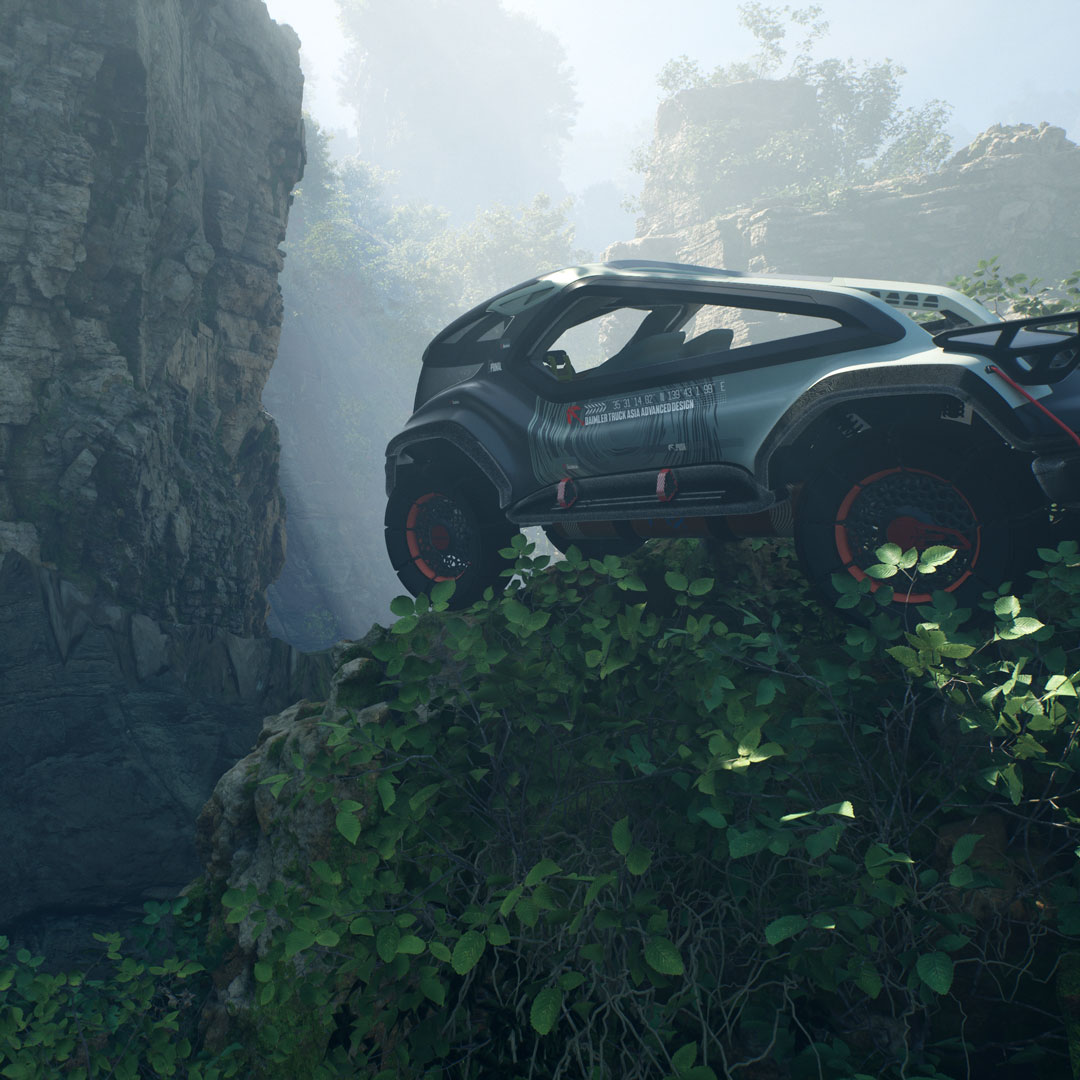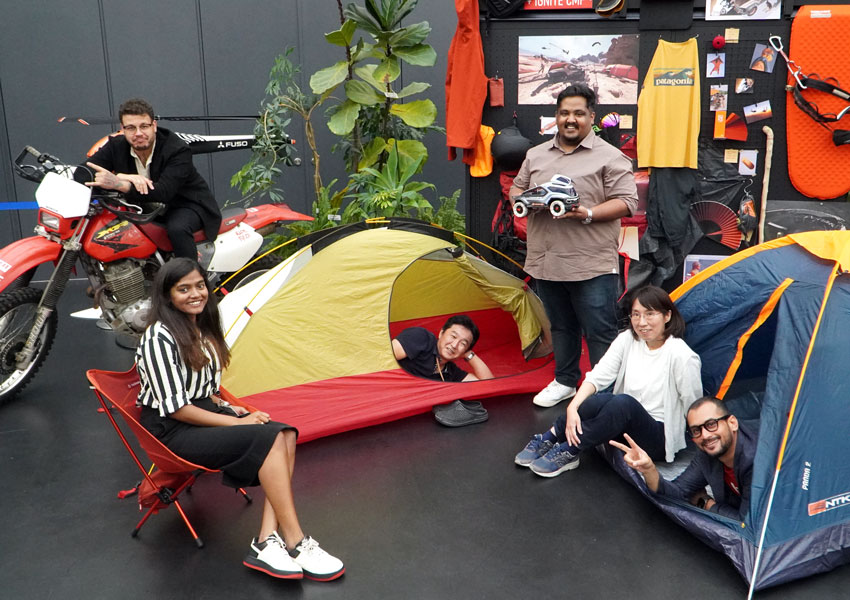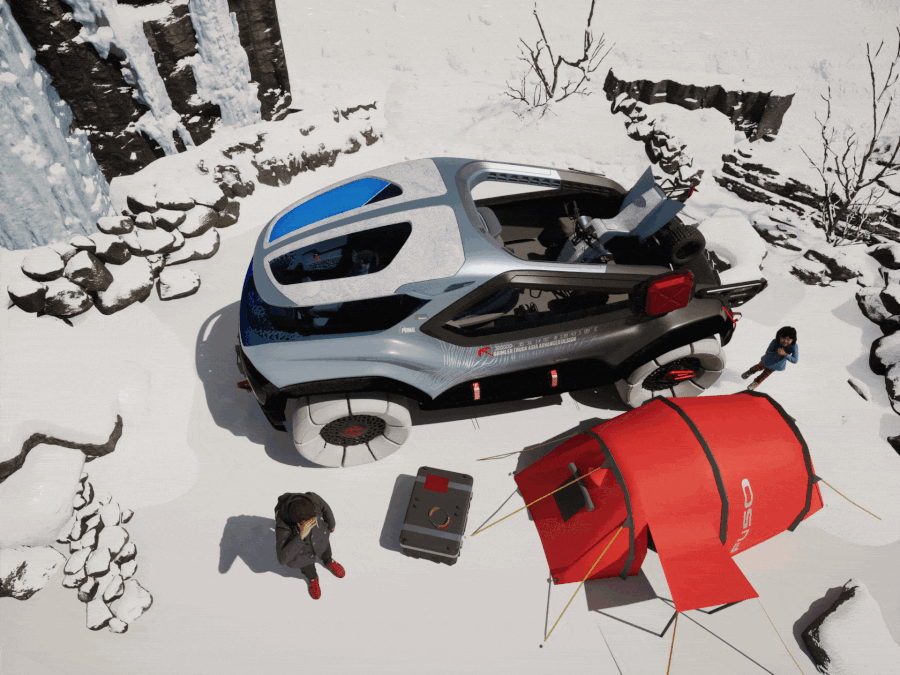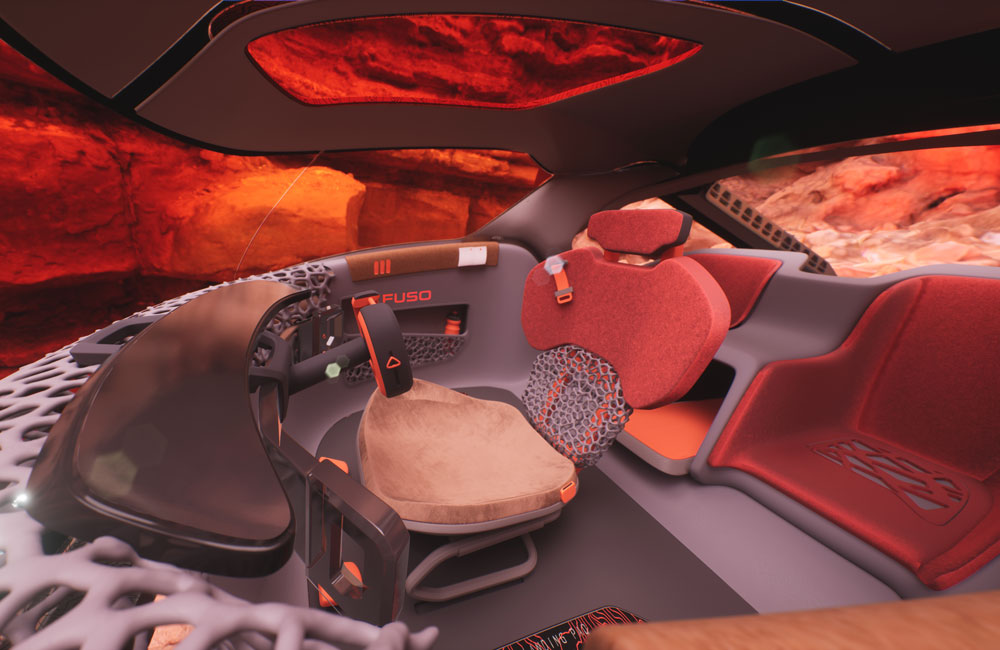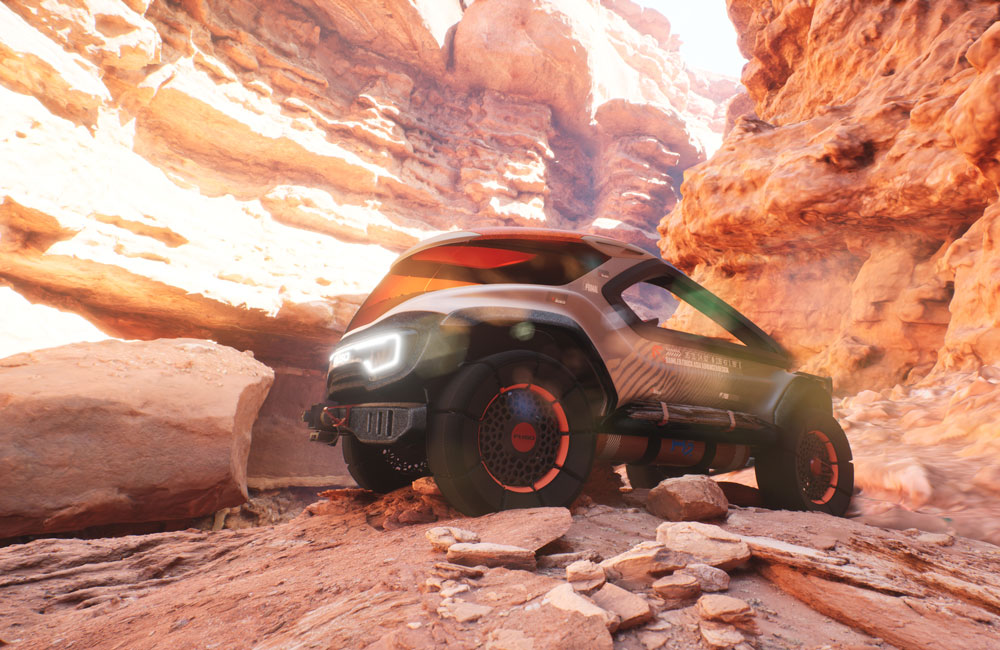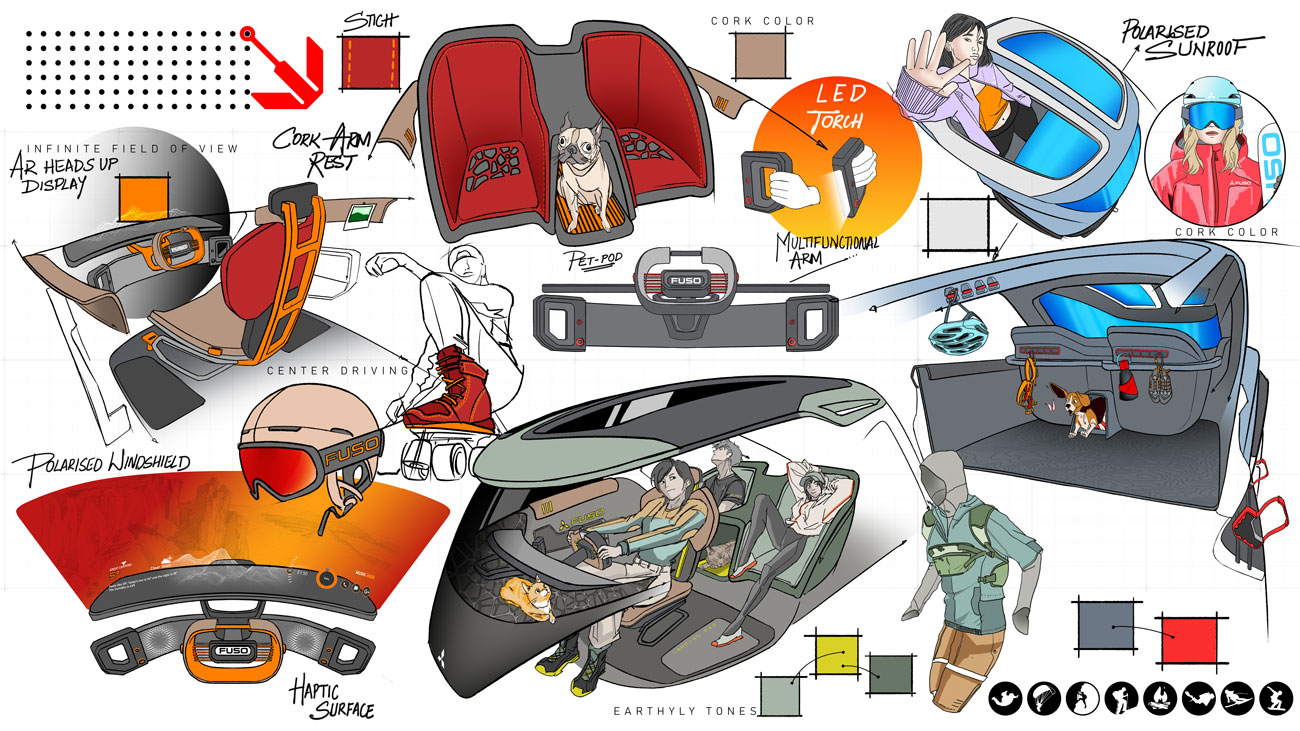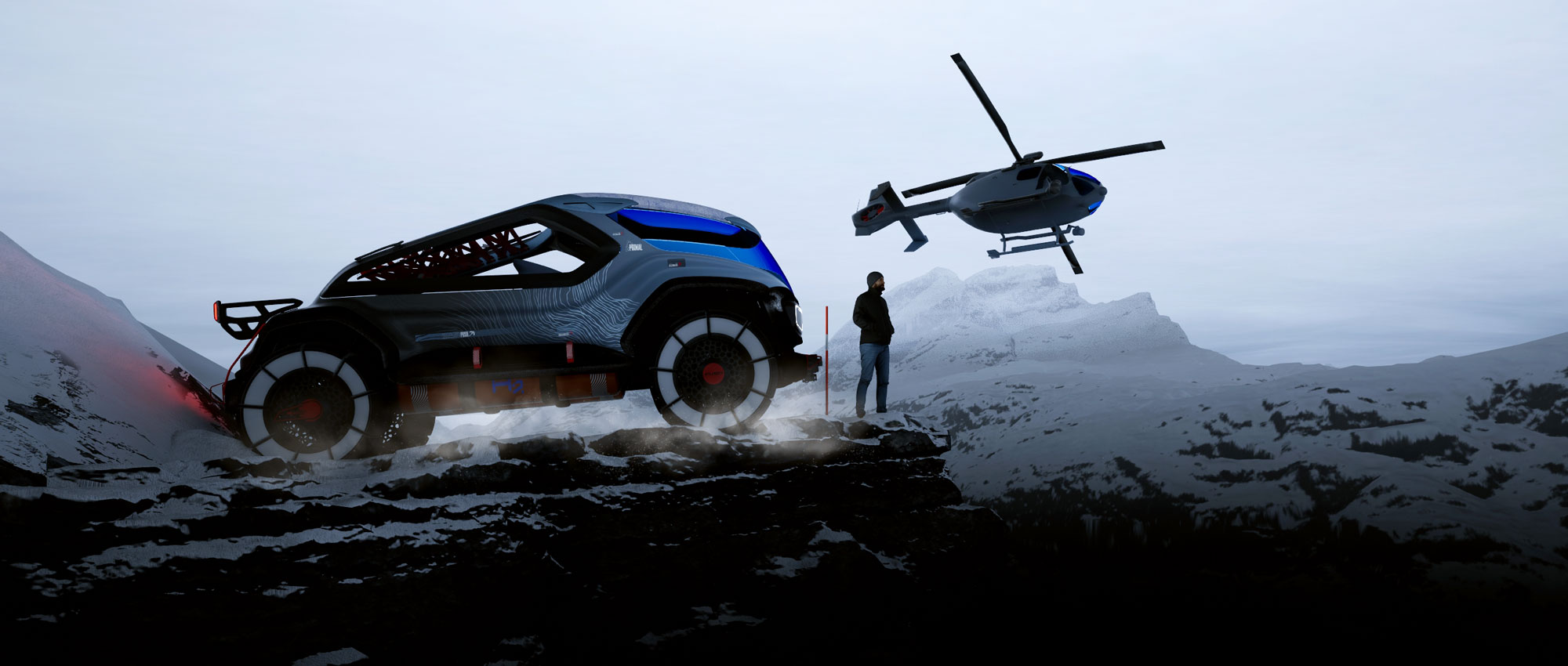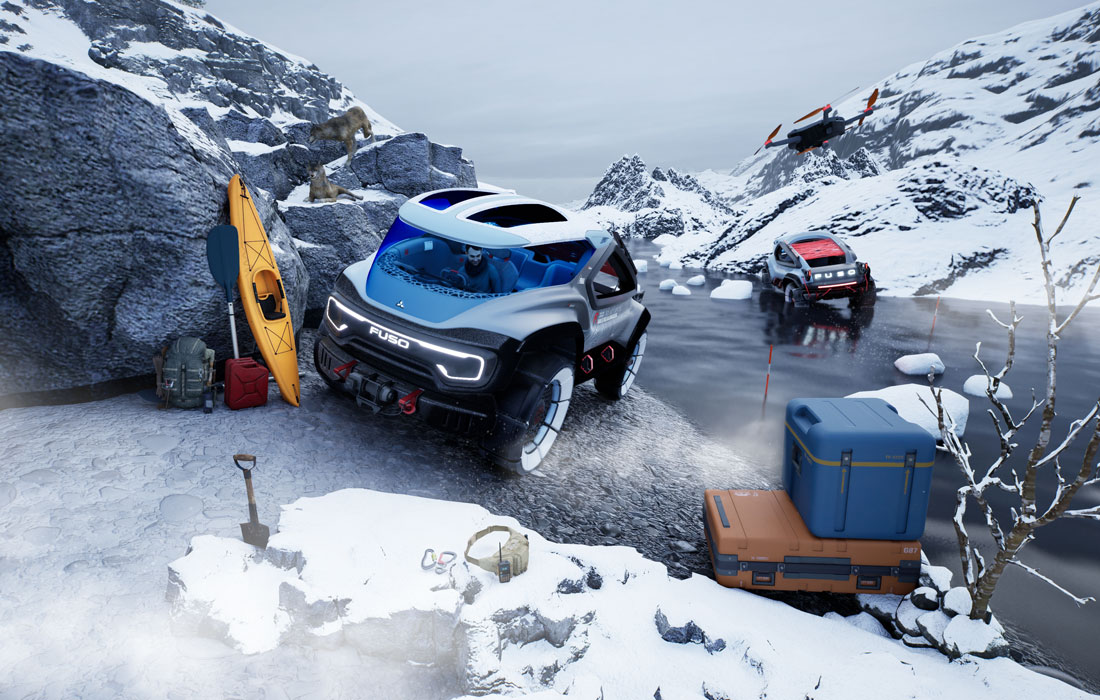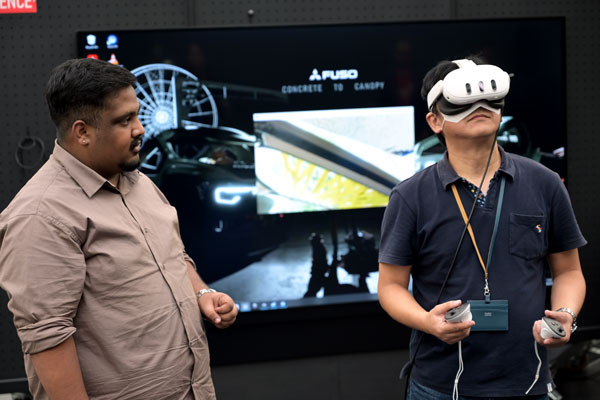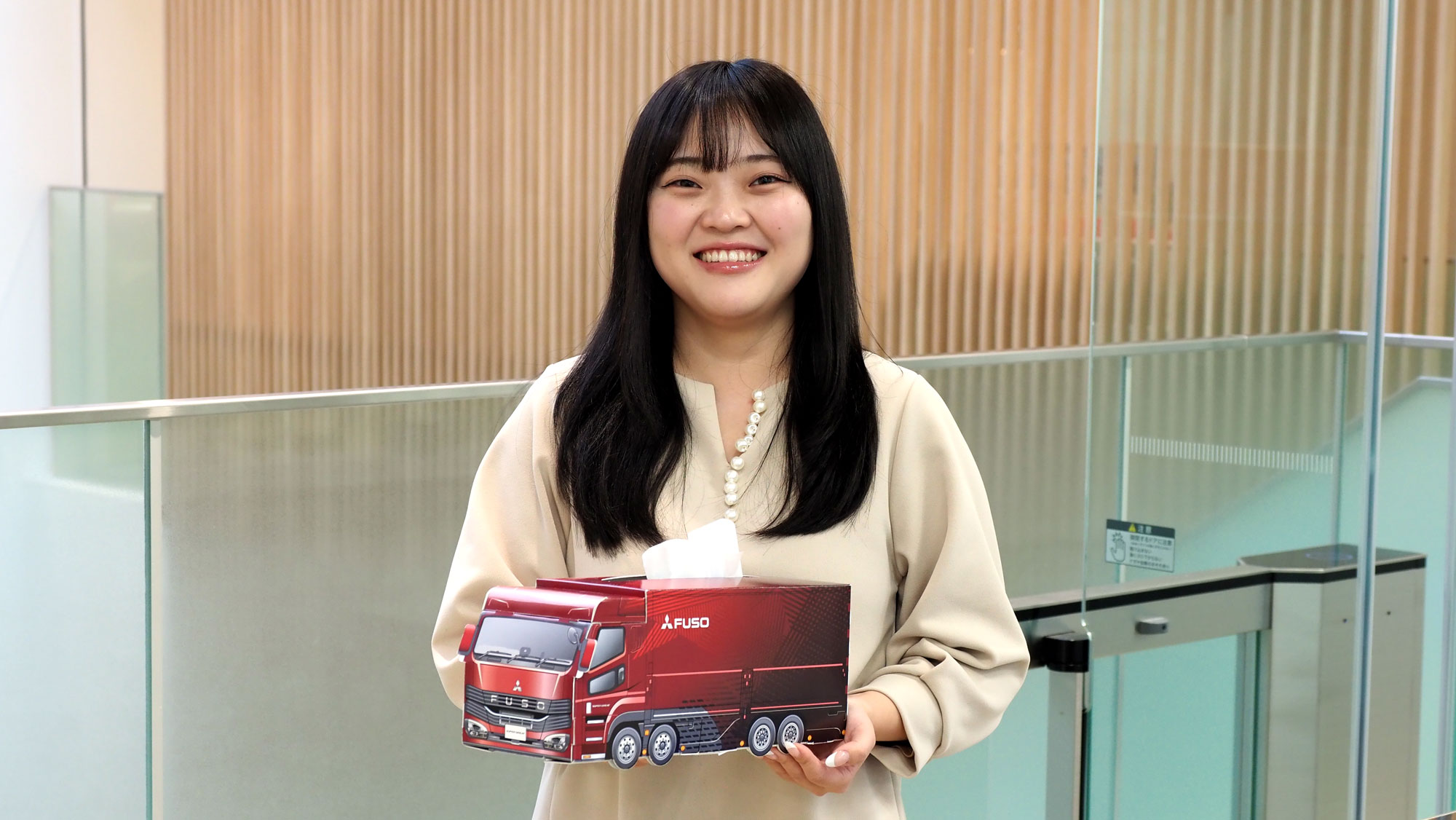“Overlanding isn’t just about reaching a destination. It’s about the journey, the experiences, and the freedom to explore. We wanted to design a vehicle that complements that adventurous spirit, allowing users to connect with the environment.”
A FUTURE-PROOF CMF STRATEGY As part of the process, the team explored emerging personas to create a robust CMF (Color, Material, Finish) strategy for 2035. By mapping personas onto archetypes, they assigned suitable CMF elements based on their traits.
Three main persona groups emerged: extroverts driven by adrenaline and rebellion (“Adrenaline,” “Outlaw,” “Active”), introverts with a grounded nature (“Instinct,” “Earthy”), and influencers who blend traits of both extroverts and introverts. We symbolized them as “Ignite” (fire), “Terra” (earth), and “Breeze” (water and wind).
Using these personas, the team developed CMF theme boards, focusing on sustainable materials like cork, recycled leather, bamboo fabric, and jute. Graphics for each variant were inspired by natural terrains: dunes for “Ignite,” tree rings for “Terra,” and glaciers for “Breeze.”


